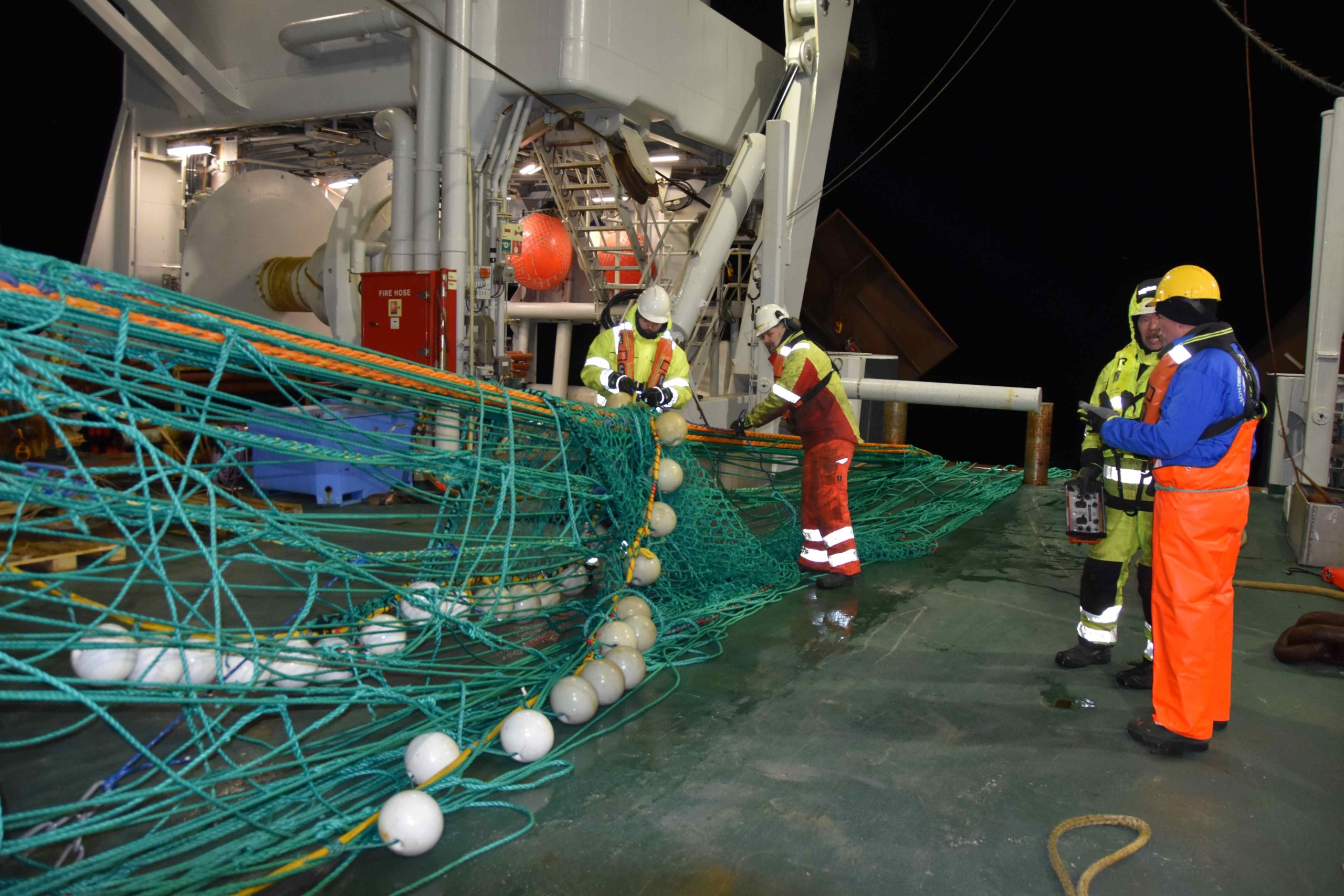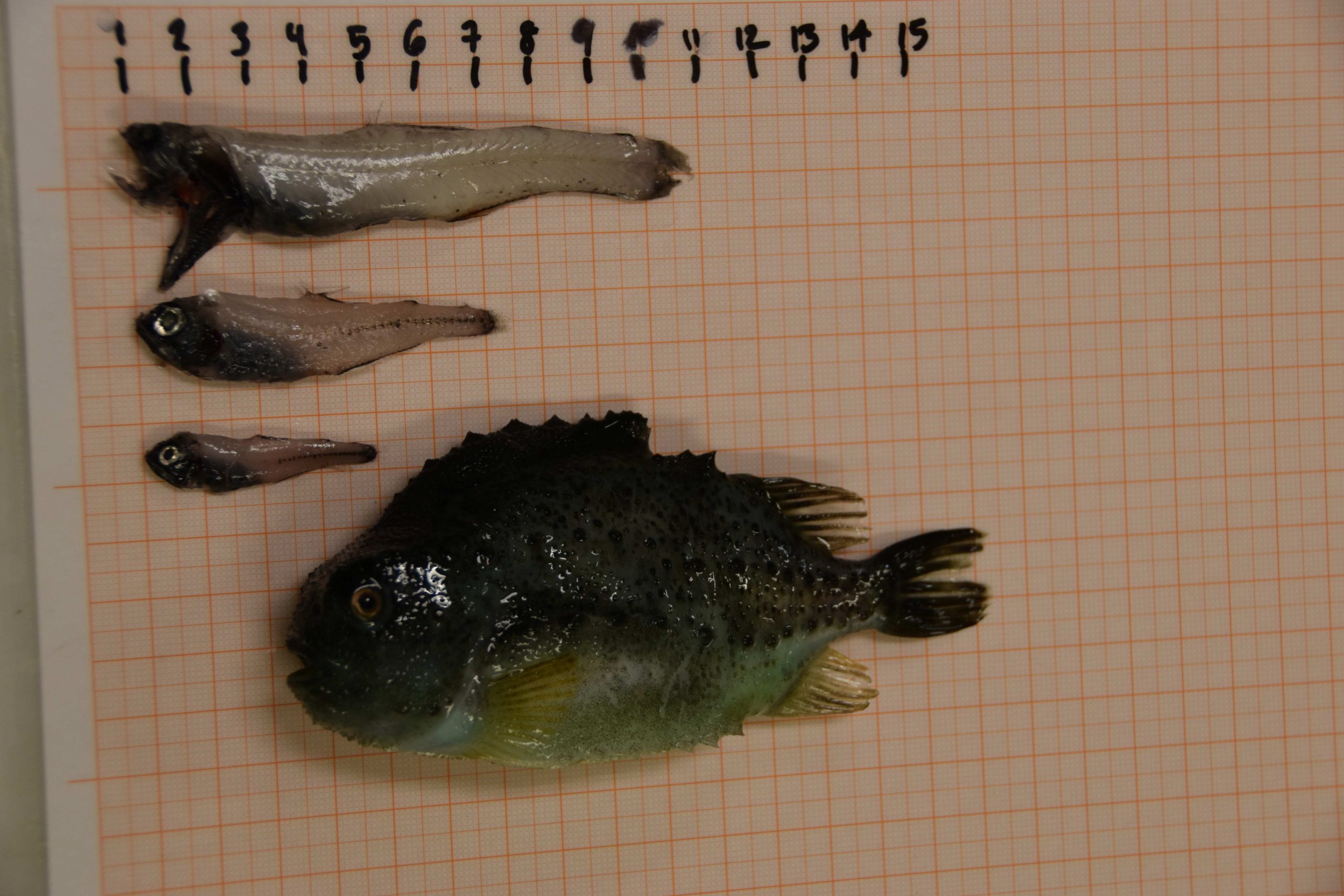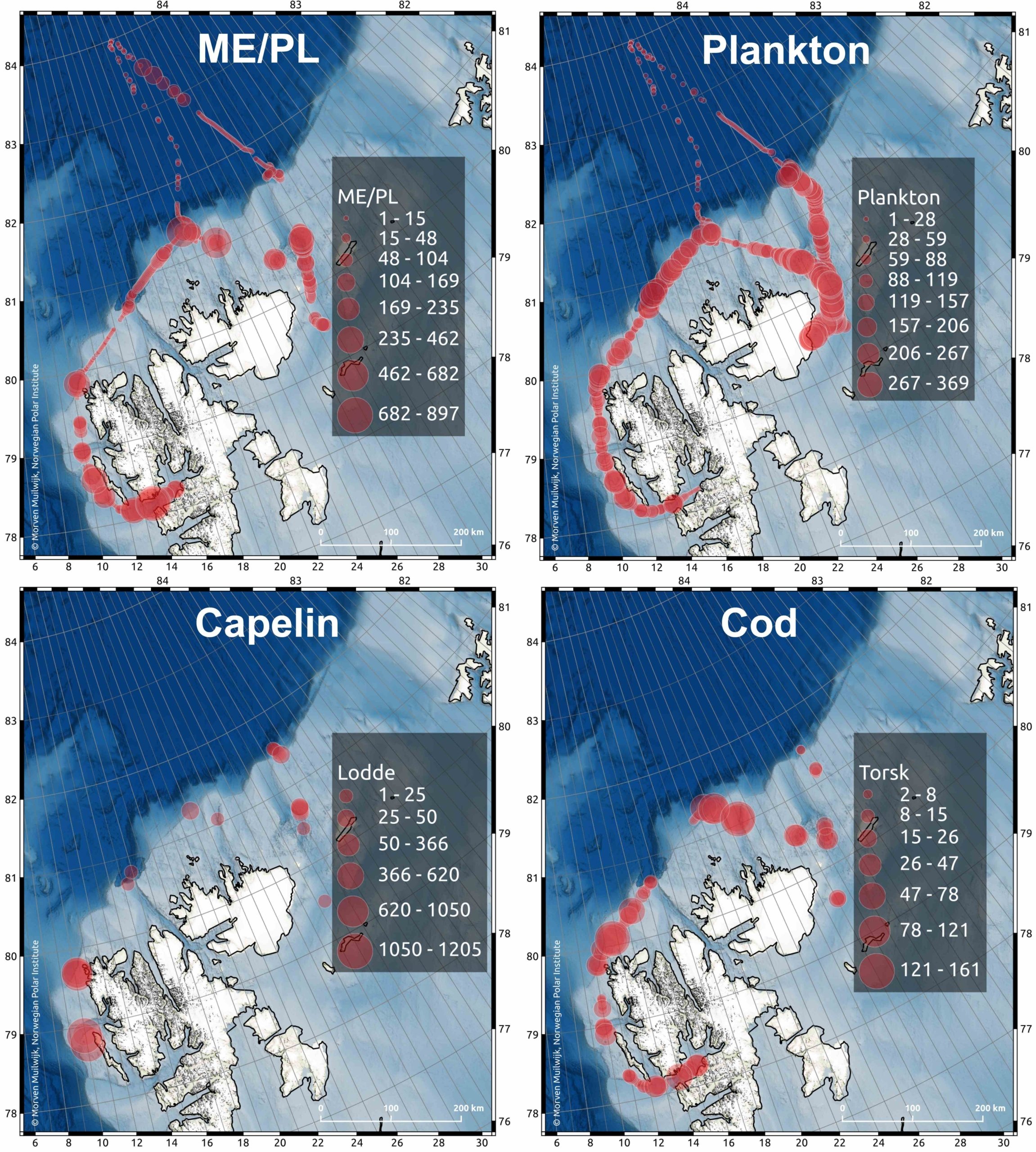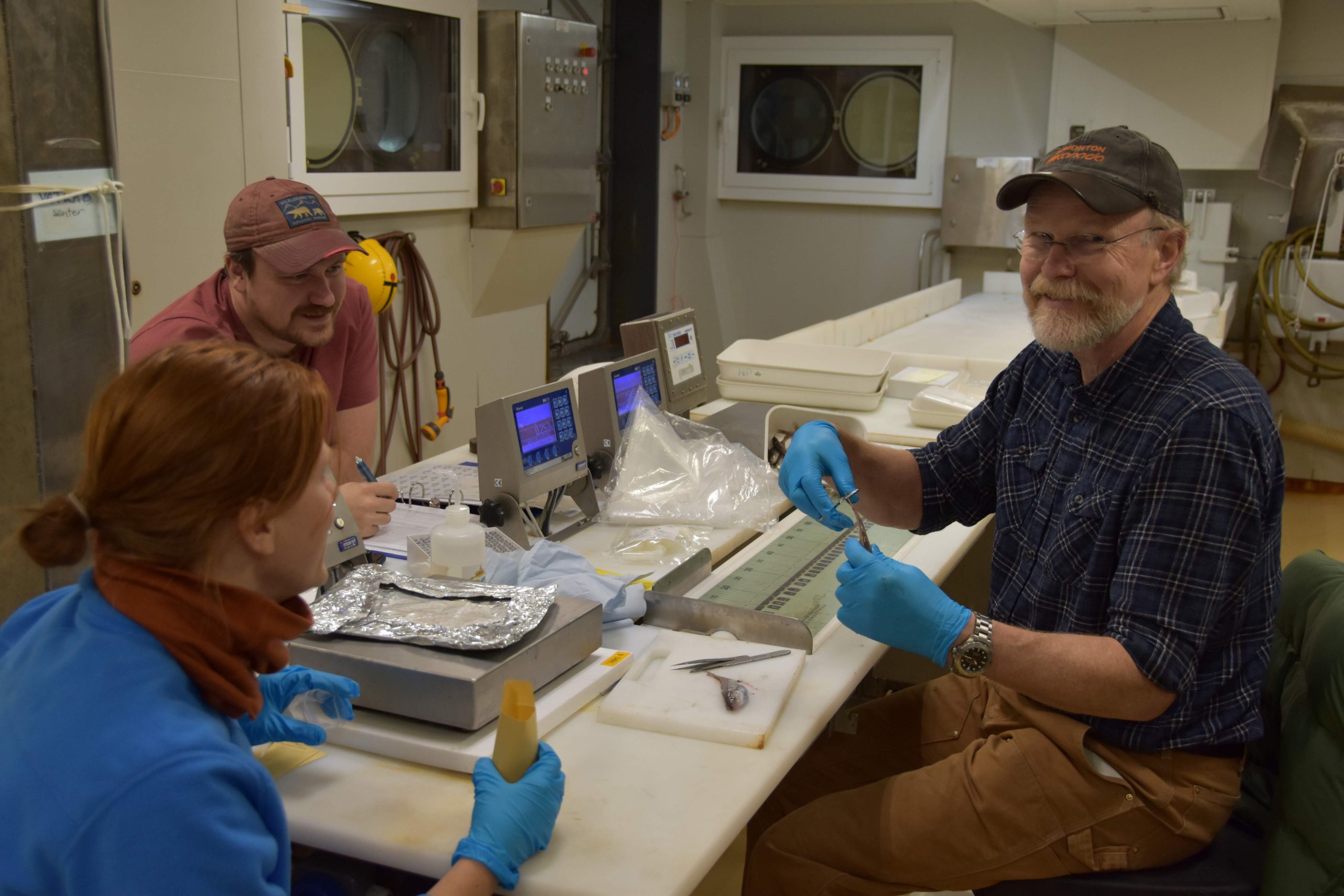This is a key question we are trying to answer during the A-TWAIN cruse with RV Kronprins Haakon to the area north of Svalbard and the Arctic Ocean.
Much of the cruise involves servicing and replacing stationary moorings, which provide important long-term oceanographic data over seasons and years. Marine ecological investigations are also an important part of the cruise, and our focus has been to determine how far out in the Arctic Ocean pelagic fishes are occurring at the end of the productive season in October-November.
The fundamental Arctic fish question
Our fundamental fish question is whether there are any pelagic fishes in the Arctic Ocean at any time? The backdrop for this is management-related concerns on unregulated fishing in the Central Arctic Ocean (CAO), which is considered High Seas with no national jurisdictions. For the CAO there is currently an international agreement from 2021 of no fishing for the next 15 years until the potential resources in the area have been properly mapped and assessed scientifically. Meanwhile, several nations are conducting research expeditions to the CAO to partly address the fundamental question of fish or no fish?

TRAWLING with pelagic Vito trawl in open water. Photo: Haakon Hop
Oceanographic conditions and zooplankton
The area west and north of Svalbard is influenced by a branch of the North Atlantic Current in its extension as the West Spitsbergen Current. It brings in warm and saline Atlantic water and its planktonic organisms to the area north of Svalbard, where it continues as an Atlantic Boundary Current along the shelf slope and diminishes north and eastwards as it dives into into the Nansen Basin of the Arctic Ocean. This current brings with it masses of phyto- and zooplankton and juvenile fishes from temperate areas, and the fishes north of Svalbard are feeding in this current on abundant food sources.

STRANGE MESOPELAGIC FISHES Rakery lanternfish (Lampanyctus macdonaldi), glacier lanternfish (Benthosema glaciale) and a new pelagic fish for the area, the lump fish (Cyclopterus lumpus). Photo: Haakon Hop
Fishes from the shelf into the deep Arctic Ocean

HYDROACOUSTIC EK-80 RECORDINGS of mesopelagic and pelagic fishes (> 200 m depth), plankton (<200 m), capelin and cod on the A-TWAIN cruise 2025. Map: M. Muilwijk
On this cruise we record the density of fish and zooplankton with hydroacoustics, using the advanced, multibeam EK-80 echosounder. Our recordings show high densities on the shelf out to the shelf slope, but signals vanish as we move from the shelf slope into the 4000 m deep Arctic Ocean. The layer of juvenile fishes in the upper 100 metre disappears and only a few recordings are left in the mesopelagic layer at about 300–400 m depth. This is confirmed by our catches in 13 pelagic trawl hauls, which we took from the shelf edge northwards to about 84 N. As soon as we are off the shelf, there are no fish, except for a few lanternfishes in the mesopelagic layer, similarly to what we saw on earlier cruises in 2022–2023.

SMALL TRAWL CATCH in cold polar water masses in the Nansen Basin. Photo: Haakon Hop
Why are there no fishes in the Central Arctic Ocean?
This question is not resolved, but we think the explanation is partly oceanographic since the fish recordings wanish as we move north from the influence of the warm Atlantic water current and into the cold Polar Water. The second part of the answer is diminishing food sources, since the abundant food sources are in the Atlantic current and much less in in cold polar water masses. This ultimately has to do with production and available nutrients, which are very low in the CAO. Maybe a future with less sea ice, more warm water and increased wind mixing will change this. But for now, the CAO is ice covered, deep and dark – and empty of pelagic fish.

FISH LAB Sorting shelf slope catch og mostly juvenile beaked redfish (Sebastes mentella). Photo: Haakon Hop

SAMPLING Vegard, Rose and Haakon, measuring, weighing and sampling fish in the lab. Photo: Silje Olsen



